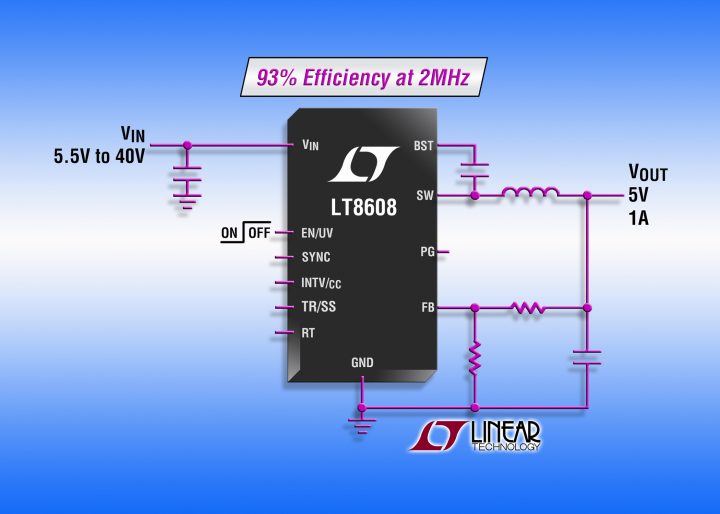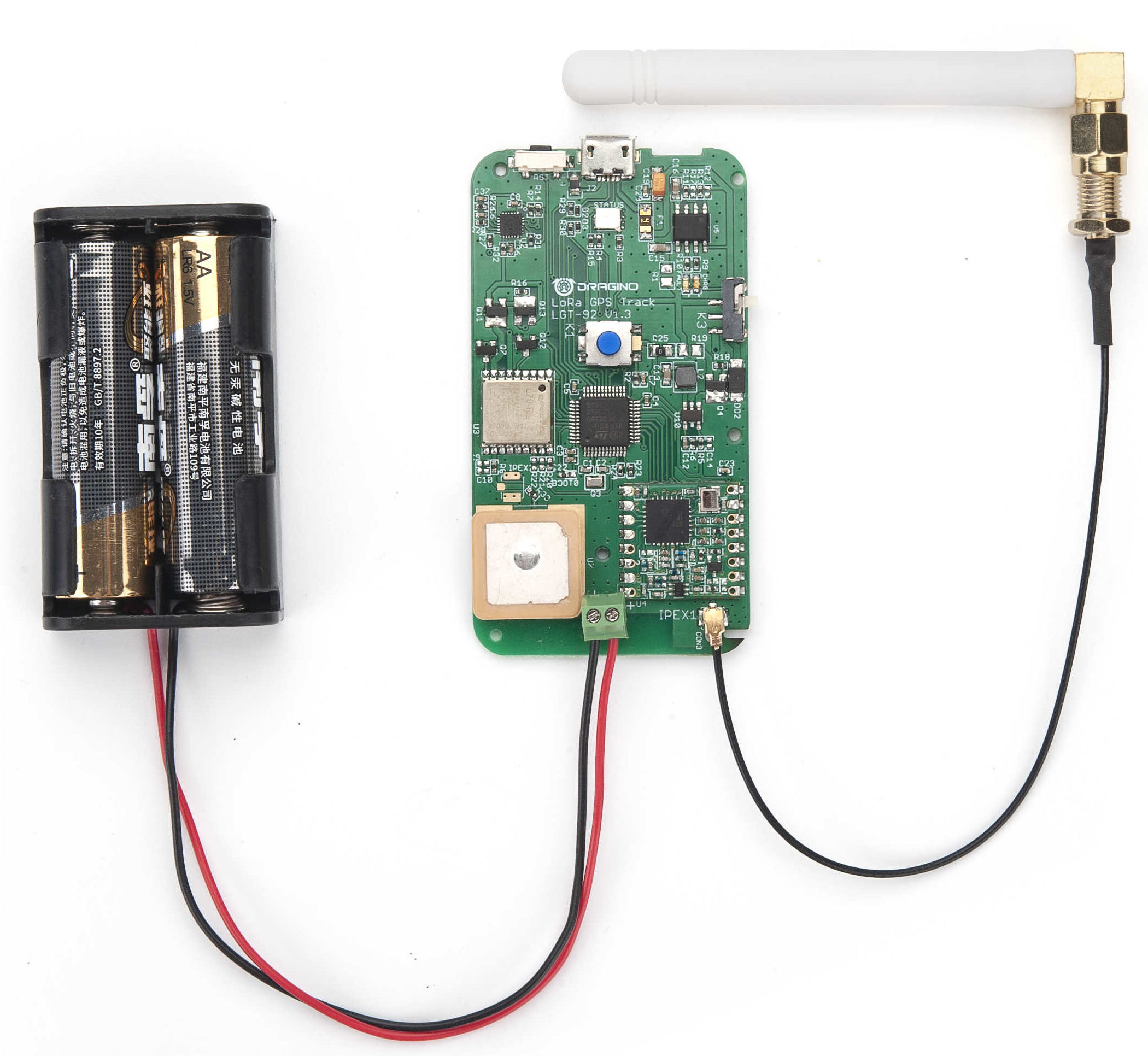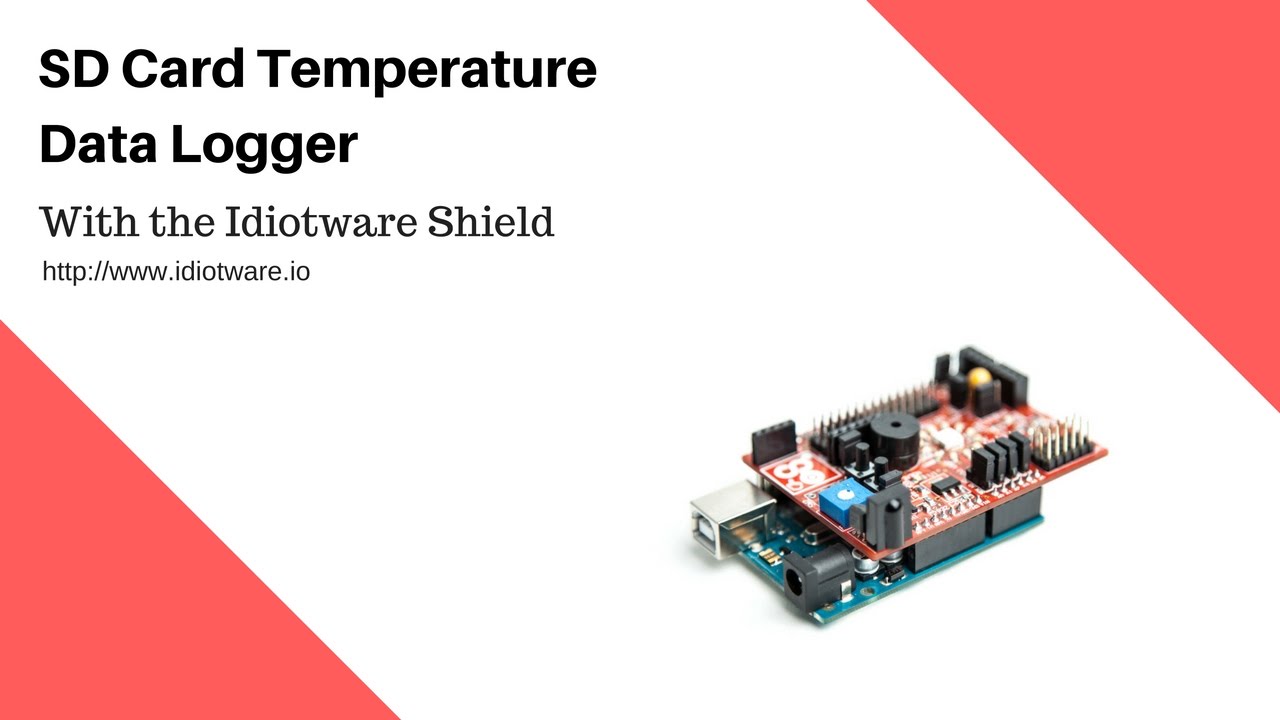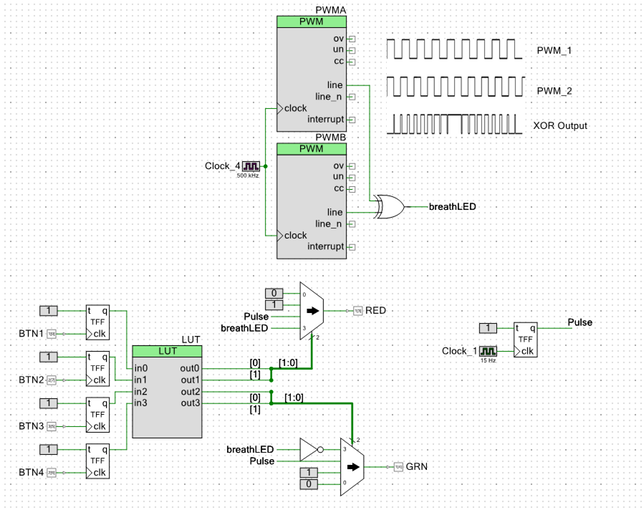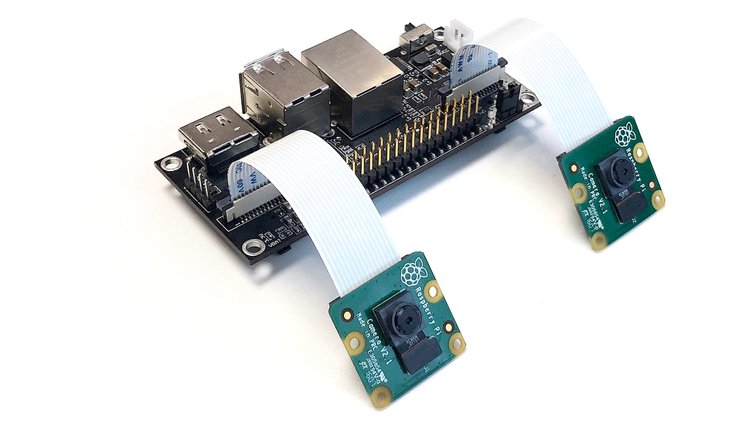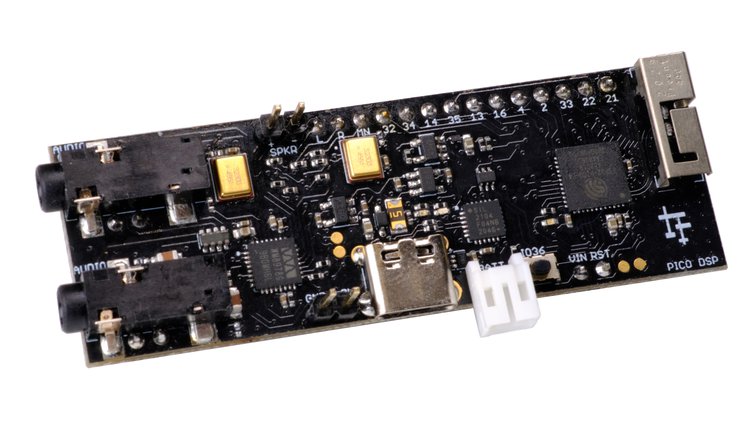
PICO DSP is Compact Arduino-Compatible ESP32 Board for Digital Signal Processing Applications
Since the introduction of the ESP32, the ESP32 audio development boards have endeared to the hearts of both hobbyists and electronics design experts. Recently, Ohmic Electronics is crowdfunding a new Arduino-compatible ESP32-based development board. The PICO DSP is an open-source development board that provides a comprehensive set of audio-processing features in a compact, breadboard-friendly package. It is designed for audio and digital signal processing (DSP) applications.
Features of PICO DSP
Pico DSP is built around an Espressif ESP32 PICO D4 processor, with a 32-bit dual-core microcontroller operating at 80/160/240 MHz. It provides a choice of either 4 MB SPI Flash with 8 MB additional pseudo-static RAM (PSRAM) or 16 MB of External SPI Flash.
Onboard there is a Wolfson WM9878 stereo audio codec with 3.5mm audio input and output connectors optimized for mobile computing and communications. Additionally, there are two on-board Knowles MEMS microphones that can be used as broadside or end-fire beam-forming arrays, as well as a stereo line-in and mono audio out on the GPIO header. The GPIO header also houses a 1W onboard speaker driver.
The development board is lightweight and portable. When combined with an external 3.7 V rechargeable Lithium-Polymer battery, it can be deployed practically anywhere or integrated into almost any device, instrument, or installation.
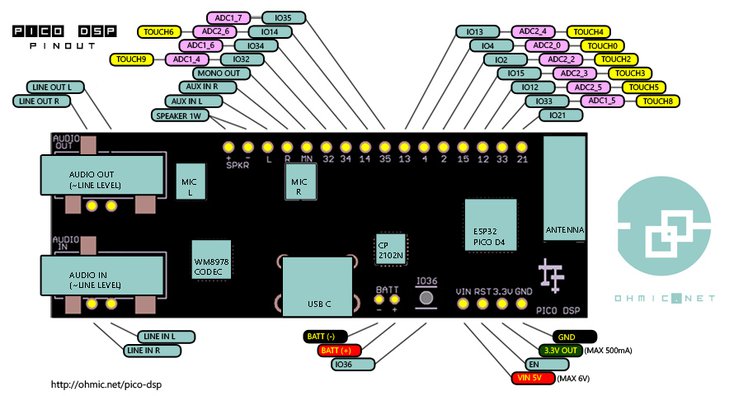
With a 70 x 24 mm form factor, the breadboard-friendly design includes 11 GPIO pins with access to both ESP32 ADC channels, JTAG for debugging, and capacitive-touch pins. For data and power, there is also a USB Type-C port. The manufacturer rates the board at 100mA while Wi-Fi is turned off and the microphones are active and under DSP control. Furthermore, it rates 52.4mA when the audio codec is on standby, and 5.7mA when the ESP32 is in deep sleep mode.
Talking about software support, PICO DSP supports several programming environments. Therefore, the board can be programmed in C/C++ with the Arduino IDE, Espressif IDF, or the open-source PlatformIO IDE extension for VS Code. Also, by using Esptool.py, you can flash it.
Original Edition vs Strawberry Edition
The firm recommends the Original Edition for beginner users who want to get started with audio programming on the ESP32 and are programming with the Arduino IDE. On the other hand, the “Strawberry Edition,” is a more experimental option for all those who require greater storage capacity.
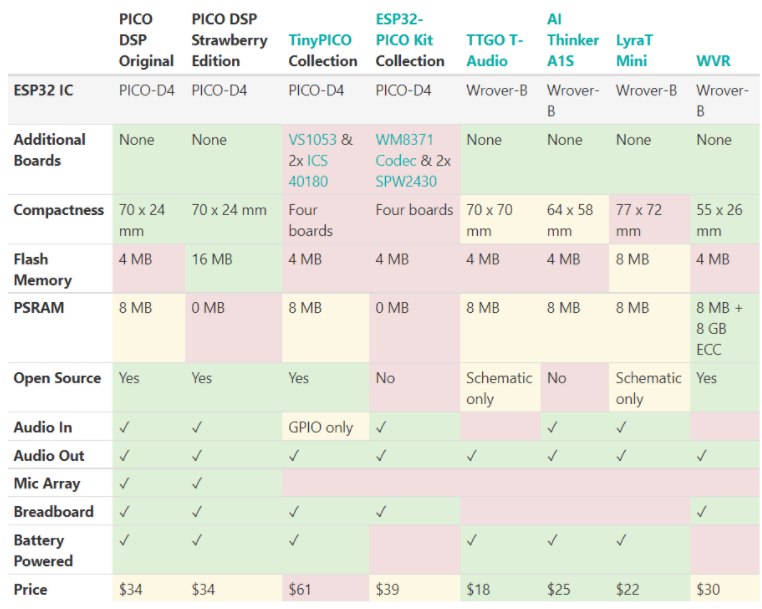
Application Aspects of PICO DSP
In addition to DSP applications, the board can be used in different areas such as music, art, creative technology, and adaptive technology. Digital music synthesis, mobile recording, Bluetooth speakers, wireless line-level directional microphones, and the design of smart musical instruments are few examples of music-related technology. Art-related applications include acoustic sensor networks, sound-art installations, and Internet-radio applications. Examples of creative and adaptive technology are voice user interface (VUI) design and Web audio for the Internet of Sounds.
For more information on the PICO DSP open-source development board visit the Crowd Supply website.






